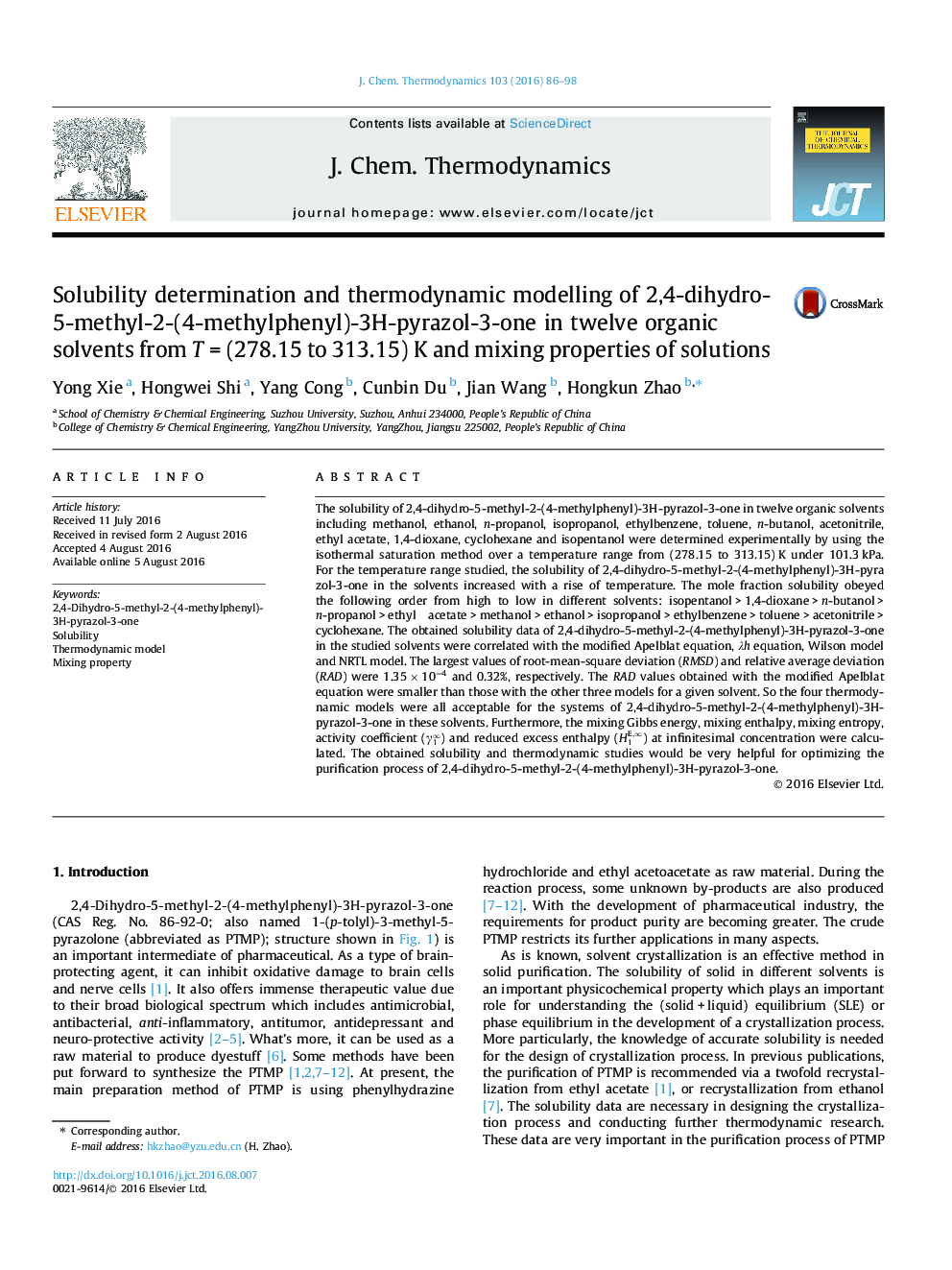| Article ID | Journal | Published Year | Pages | File Type |
|---|---|---|---|---|
| 6476908 | The Journal of Chemical Thermodynamics | 2016 | 13 Pages |
•Solubility of 2,4-dihydro-5-methyl-2-(4-methylphenyl)-3H-pyrazol-3-one in twelve solvents were determined.•The solubility were correlated with four thermodynamic models.•Mixing properties of the solutions were computed.
The solubility of 2,4-dihydro-5-methyl-2-(4-methylphenyl)-3H-pyrazol-3-one in twelve organic solvents including methanol, ethanol, n-propanol, isopropanol, ethylbenzene, toluene, n-butanol, acetonitrile, ethyl acetate, 1,4-dioxane, cyclohexane and isopentanol were determined experimentally by using the isothermal saturation method over a temperature range from (278.15 to 313.15) K under 101.3 kPa. For the temperature range studied, the solubility of 2,4-dihydro-5-methyl-2-(4-methylphenyl)-3H-pyrazol-3-one in the solvents increased with a rise of temperature. The mole fraction solubility obeyed the following order from high to low in different solvents: isopentanol > 1,4-dioxane > n-butanol > n-propanol > ethyl acetate > methanol > ethanol > isopropanol > ethylbenzene > toluene > acetonitrile > cyclohexane. The obtained solubility data of 2,4-dihydro-5-methyl-2-(4-methylphenyl)-3H-pyrazol-3-one in the studied solvents were correlated with the modified Apelblat equation, λh equation, Wilson model and NRTL model. The largest values of root-mean-square deviation (RMSD) and relative average deviation (RAD) were 1.35 × 10−4 and 0.32%, respectively. The RAD values obtained with the modified Apelblat equation were smaller than those with the other three models for a given solvent. So the four thermodynamic models were all acceptable for the systems of 2,4-dihydro-5-methyl-2-(4-methylphenyl)-3H-pyrazol-3-one in these solvents. Furthermore, the mixing Gibbs energy, mixing enthalpy, mixing entropy, activity coefficient (γ1∞) and reduced excess enthalpy (H1E,∞) at infinitesimal concentration were calculated. The obtained solubility and thermodynamic studies would be very helpful for optimizing the purification process of 2,4-dihydro-5-methyl-2-(4-methylphenyl)-3H-pyrazol-3-one.
Graphical abstractFigure optionsDownload full-size imageDownload high-quality image (191 K)Download as PowerPoint slide
